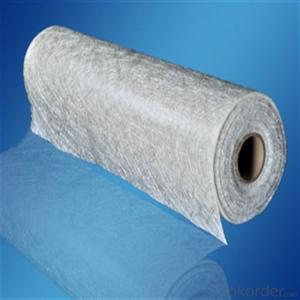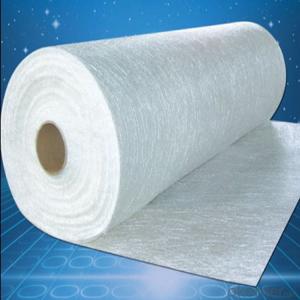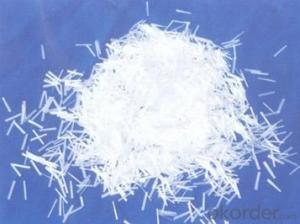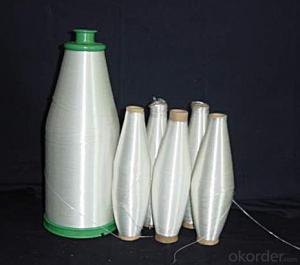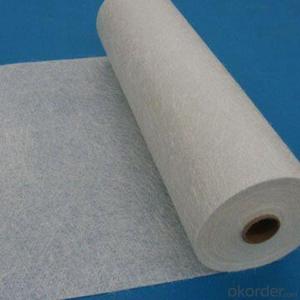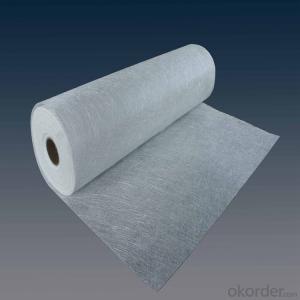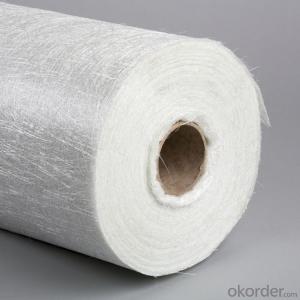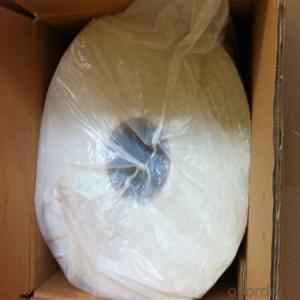450gsm Powder Fiberglass Chopped Strand Mat C Glass
- Loading Port:
- China main port
- Payment Terms:
- TT OR LC
- Min Order Qty:
- 1 kg
- Supply Capability:
- 5000 kg/month
OKorder Service Pledge
OKorder Financial Service
You Might Also Like
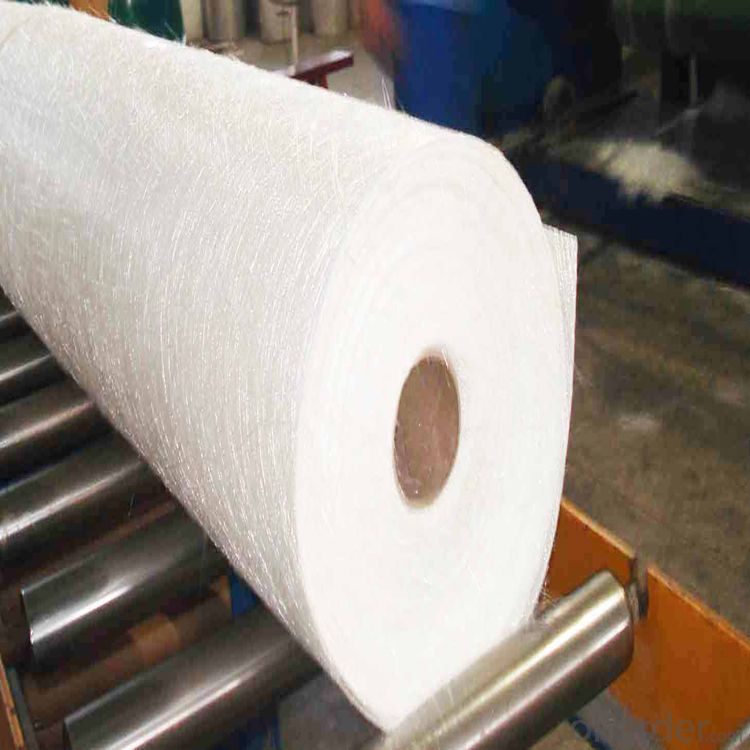
Product Description:
Chopped strand mat is made from chopped glass fibers, which are bonded with powder or emulsion binders. It can be used in hand lay-up process and continuous laminating process to produce FRP products, such as plates, lighting board, hull, bathtub, cooling towers, anti-corrosion materials, vehicles.
Features:
Uniform thickness, softness and hardness good.
Good compatibility with resin, easy completely wet-out.
Fast and consistent wet-out speed in resins and good manufacturability.
Good mechanical properties, easy cutting.
Good cover mold, suitable for modeling complex shapes.
Application:
fiberglass thickness is suitable for application by hand lay-up, reinforce and machine FRP molding,
including interior decoration of vehicles, boat hulls, complete set of sanitary equipment, anticorrosive pipes, tanks, building materials, tables, chairs, panels and all kind of composite FRP products.
Specifications:
Item | Over Density | Moisture Content | Chop Density | Polyester Yarn | Width |
(g/m2) | (%) | (g/m2) | (g/m2) | (mm) | |
EMK300 | 309.5 | ≤0.15 | 300 | 9.5 | 50-3300 |
EMK380 | 399 | 380 | 19 | ||
EMK450 | 459.5 | 450 | 9.5 | ||
EMK450 | 469 | 450 | 19 | ||
EMC0020 | 620.9 | 601.9 | 19 | ||
EMC0030 | 909.5 | 900 | 9.5 |
Special products are available according to customer’s requirement.
Product Packaging:
Each Surface Tissue is wound onto a paper tube which has an inside diameter of 76mm and the mat roll has a diameter of 330mm. The mat roll is wrapped up with plastic film,and then packed in a cardboard box or wrapped up with kraft paper. The rolls can be vertically or horizontally placed. For transportation, the rolls can be loaded into a cantainer directly or on pallets.
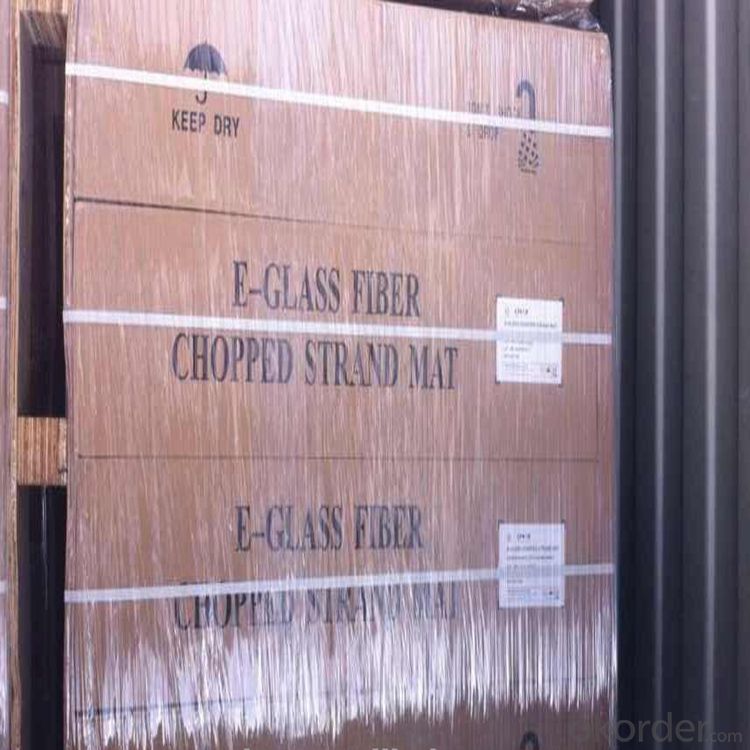
Product Storage:
Unless otherwise specified, Chopped Strand Mat should be stored in a dry, cool and rain-proof area. It is recommended that the room temperature and humidity should be always maintained at 15℃~35℃ and 50%~75% respectively.
Company Information
CNBM (China National Building Material) Group is the largest comprehensive building materials group in China that in integrate scientific research, manufacturing and logistics into one entity. The largest building materials and equipment specialists in China. Upon State Council approval, today CNBM owned more than 300 subordinate manufacturing factories and servicing companies. There are 6 fully owned public listed companies and 11 partially owned with substantial shares public listed companies. In many of these fields, CNBM is playing the leading role in the building industry in the country.

Order Information
Ordering please specify:
1. the product code, 2. weight, 3. width, 4. order quantity, 5. packaging, 6. special requirements please specify.
FAQ:
1. How long will you get reply?
Any inquiry will be replied within 24 hours. Usually we will reply within 12 hours.
2. How long is warranty period?
We provide 3 year warranty period.
3. What is your MOQ?
Any order quantity is available.
4. Can you provide sample?
Yes, samples are in stock. we can offer free sample for you.
5. Payment terms?
We can accept L/C, T/T, Western Union, Paypal etc.
6. Do you offer OEM service?
Yes, we can print customers’ logo on the packaging;
And the size and specification can be produced and design according to your demand.
7. What is the Production Lead Time?
15-20 days for bulk production after confirm the order.
- Q:Does fiberglass chopped strand improve the vibration damping properties of composite materials?
- Yes, the vibration damping properties of composite materials can be improved by using fiberglass chopped strand. Fiberglass possesses inherent damping properties because of its viscoelastic nature, enabling it to absorb and dissipate energy during vibrations. When utilized as a reinforcement in composite materials, the fiberglass chopped strand enhances the overall damping characteristics of the composites. The dispersion of chopped strands throughout the composite matrix, facilitated by their random orientation and short length, results in the creation of an interlocking network. This network aids in the dissipation of vibration energy by hindering the propagation of vibration waves, thereby reducing their amplitude and frequency. Consequently, the composite material exhibits enhanced vibration damping properties. Moreover, the high strength and stiffness of fiberglass contribute significantly to the overall performance of the composite material. By reinforcing the matrix, the fiberglass chopped strand increases the rigidity of the composite, minimizing the magnitude of vibrations. This combination of damping and reinforcement properties makes fiberglass chopped strand an ideal choice for applications requiring vibration damping. It should be noted that the specific improvement in vibration damping properties may vary depending on the composition and design of the composite material, as well as the amount and distribution of the fiberglass chopped strand. Proper selection and incorporation of the chopped strand are vital for achieving the desired vibration damping characteristics in composite materials.
- Q:What are the typical surface preparation techniques for fiberglass chopped strand composites?
- Typical surface preparation techniques for fiberglass chopped strand composites include sanding or grinding the surface to remove any rough edges or imperfections, and then cleaning the surface thoroughly to remove any dust, dirt, or contaminants. This is followed by applying a primer or bonding agent to enhance adhesion between the composite and any subsequent coatings or adhesives.
- Q:How does the UV resistance of fiberglass chopped strand compare to other reinforcing materials?
- The UV resistance of fiberglass chopped strand is generally considered to be superior compared to other reinforcing materials. Fiberglass is inherently resistant to UV radiation and does not degrade or weaken when exposed to sunlight for prolonged periods. Other materials like carbon fiber or aramid fibers may require additional protective coatings or treatments to maintain their UV resistance.
- Q:Is fiberglass chopped strand water-resistant?
- Yes, fiberglass chopped strand is water-resistant. The strands are coated with a special resin that helps to repel water and prevent it from soaking into the material. This makes fiberglass chopped strand a popular choice for applications where water exposure or moisture resistance is a concern, such as boat building, swimming pools, and bathroom fixtures. However, it is important to note that while fiberglass chopped strand is water-resistant, it is not completely waterproof. Prolonged exposure to water or immersion can still cause damage or degradation over time. Therefore, it is important to take proper precautions and use additional waterproofing measures, such as sealants or coatings, when necessary.
- Q:How does the surface treatment of the chopped strand affect its performance?
- The performance of chopped strand in different applications is significantly influenced by its surface treatment. To enhance adhesion between the glass fibers and resin matrix in composite materials, a chemical coating is applied to the individual fibers of the strand. One of the main advantages of surface treatment is the improvement of interfacial adhesion. The chemical coating strengthens the bond between the glass fibers and resin, resulting in enhanced mechanical properties of the composite. This includes increased tensile strength, flexural strength, and impact resistance. Moreover, the improved adhesion reduces the chances of delamination or fiber pull-out, which could weaken the overall structure. Additionally, surface treatment helps in preventing moisture absorption. Untreated glass fibers have a hydrophilic nature, meaning they easily absorb water. This can cause dimensional instability, reduced mechanical properties, and even degradation of the composite over time. However, the surface treatment creates a hydrophobic barrier that reduces water absorption, ensuring the long-term durability of the composite. The compatibility of the strand with different resin systems is another important aspect affected by surface treatment. Resins like epoxy, polyester, or vinyl ester have different chemical properties. By tailoring the surface treatment, the adhesion between the glass fibers and a specific resin system can be optimized, maximizing the overall performance of the composite material. In conclusion, surface treatment of chopped strands plays a critical role in enhancing the performance of composite materials. It improves interfacial adhesion, reduces moisture absorption, and maximizes compatibility with various resin systems. Consequently, the treated chopped strand offers superior mechanical properties, increased durability, and a longer lifespan in applications such as automotive parts, wind turbine blades, construction materials, and many others.
- Q:How is the delamination resistance of fiberglass chopped strand composites determined?
- The determination of delamination resistance in fiberglass chopped strand composites involves a range of testing methods. One commonly utilized approach is the interlaminar shear strength (ILSS) test. This test involves preparing a composite specimen with layers of fiberglass and resin, and subjecting it to a shear force to measure its resistance to delamination. Another method employed to assess delamination resistance is the mode I interlaminar fracture toughness test. This test evaluates how well the composite can withstand crack propagation under mode I loading conditions, where the crack extends in the plane of the composite layers. The resistance to delamination is measured by analyzing the critical stress intensity factor (KIC) or critical energy release rate (GIC) required for crack propagation. Additionally, non-destructive testing techniques like ultrasonic testing or acoustic emission monitoring can be utilized to detect and characterize delamination within the composite structure. These techniques allow for the identification and evaluation of the extent and severity of delamination, providing valuable insights into the composite's resistance to delamination. In summary, the delamination resistance of fiberglass chopped strand composites is determined through a combination of destructive and non-destructive testing methods. These methods focus on evaluating interlaminar shear strength, fracture toughness, and detecting delamination using advanced testing techniques.
- Q:What are the typical fiber lengths used in fiberglass chopped strand?
- Depending on the specific application and requirements, the typical lengths of fibers used in fiberglass chopped strand can vary. However, it is most common for the fibers to range from 3-6 mm (1/8-1/4 inch). These shorter fiber lengths are preferred because they disperse and distribute better within the resin matrix, resulting in improved overall strength and performance of the fiberglass composite. Additionally, shorter fibers help prevent entanglement and clumping during processing. It is worth noting that longer fiber lengths can also be used in specialized applications where increased strength or specific properties are desired. Ultimately, the choice of fiber length in fiberglass chopped strand depends on the specific needs and characteristics of the intended end use.
- Q:Is fiberglass chopped strand resistant to extreme weather conditions?
- Yes, fiberglass chopped strand is generally resistant to extreme weather conditions. It has excellent resistance to both high and low temperatures, as well as UV radiation, making it suitable for outdoor applications that are exposed to harsh weather conditions.
- Q:How is fiberglass chopped strand used for thermal insulation?
- Fiberglass chopped strand is commonly used for thermal insulation due to its unique properties. Firstly, the fibers are made from molten glass which is then cooled and spun into fine strands. These strands are then chopped into shorter lengths, usually around 1-3 inches, and mixed with a binder to form a loose mat or blanket. The chopped strand mat is then used as a layer of insulation in various applications. Its primary function is to trap air within its fibers, creating a barrier that reduces heat transfer. Air is a poor conductor of heat, so the trapped air pockets within the mat act as an effective insulator, preventing heat from escaping or entering the insulated area. Furthermore, fiberglass chopped strand insulation is non-combustible, meaning that it does not contribute to the spread of fire. This makes it a particularly safe choice for thermal insulation in buildings and other structures. It also offers excellent acoustic insulation properties, reducing noise transmission through walls and floors. Another advantage of fiberglass chopped strand insulation is its durability. It does not degrade or lose its insulating properties over time, making it a long-lasting solution for thermal insulation. It is also resistant to moisture, mold, and pests, ensuring a consistently high level of insulation performance. In summary, fiberglass chopped strand is used for thermal insulation due to its ability to trap air, its non-combustible nature, acoustic insulation properties, durability, and resistance to moisture and pests. Its versatility makes it a popular choice for a wide range of applications, providing efficient and reliable thermal insulation for both residential and commercial buildings.
- Q:Can fiberglass chopped strand be used in the production of wind turbine towers?
- Yes, fiberglass chopped strand can be used in the production of wind turbine towers. It is commonly used as a reinforcement material in the manufacturing of composite structures, providing strength, durability, and corrosion resistance. The fiberglass chopped strand is typically mixed with a resin matrix to form composite panels or laminates, which are then used to construct the wind turbine towers.
1. Manufacturer Overview |
|
|---|---|
| Location | |
| Year Established | |
| Annual Output Value | |
| Main Markets | |
| Company Certifications | |
2. Manufacturer Certificates |
|
|---|---|
| a) Certification Name | |
| Range | |
| Reference | |
| Validity Period | |
3. Manufacturer Capability |
|
|---|---|
| a)Trade Capacity | |
| Nearest Port | |
| Export Percentage | |
| No.of Employees in Trade Department | |
| Language Spoken: | |
| b)Factory Information | |
| Factory Size: | |
| No. of Production Lines | |
| Contract Manufacturing | |
| Product Price Range | |
Send your message to us
450gsm Powder Fiberglass Chopped Strand Mat C Glass
- Loading Port:
- China main port
- Payment Terms:
- TT OR LC
- Min Order Qty:
- 1 kg
- Supply Capability:
- 5000 kg/month
OKorder Service Pledge
OKorder Financial Service
Similar products
New products
Hot products
Related keywords

